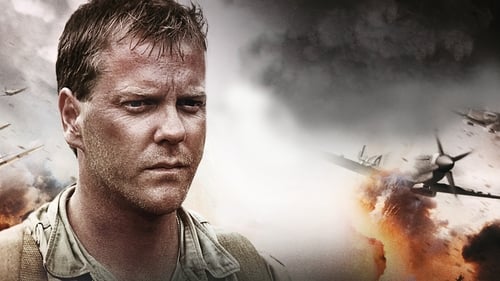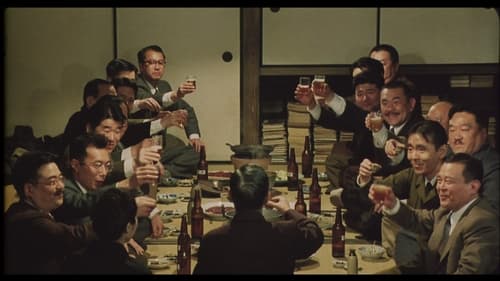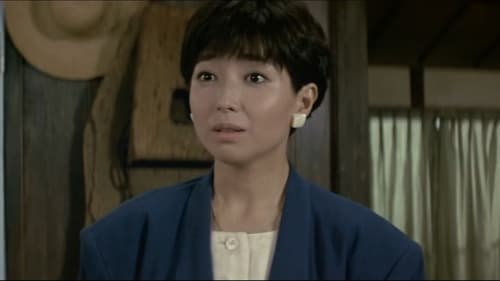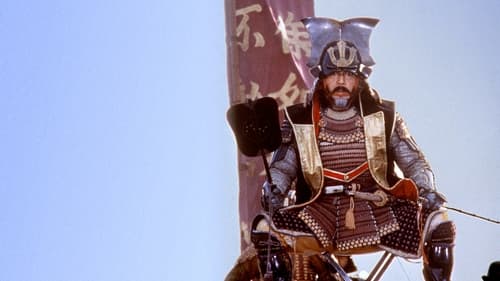Masayuki Yui
Nacimiento : 1947-09-21, Kanagawa Prefecture, Japan
Historia
Masayuki Yui was born in 1947 in Kamakura, Kanagawa, Japan. He is an actor and writer, known for Ran (1985), Kagemusha (1980) and Dreams (1990).

Gankane-san
Cicada is the story of Jumpei-- a man who loses sight of his progeny when he finds out he is infertile, but then is given the gift of clairvoyance and begins to see glimpses of the future. These glimpses lead him to a series of cicada shells, which become symbolic of his desire to shed his old self. Though his lineage ends with himself, Jumpei starts anew as a father-figure to his sister's young son.

In 2011, a journalist arrives in Nagaoka, a Japanese village that underwent destruction during both World War II and the 2004 Chūetsu earthquakes, and is now notable for the fireworks it launches annually in memory of the victims of war. She is there for two reasons: firstly, to learn about the experiences of Nagaoka's inhabitants, and secondly, to watch a stage play written by an enigmatic student of her ex-boyfriend, which depicts the bombing of the city during WWII.

Hasegawa
Tamotsu is expecting a persimmon to dry and yet he cannot accept that it is time for a man on his deathbed to die. As the persimmon mysteriously, or supernaturally, holds out from drying, so Tamotsu tries his hardest to keep the man alive. Only when Tamotsu has let go can the persimmon take its natural course.

Ohba
A talented but troubled Edo Period swordsman, Kanemi Sanzaemon. Three years earlier, Kanemi killed a woman, Renko, the corrupt mistress of the powerful daimyo Tabu Ukyou. Unexpectedly, Kanemi received a lenient sentence for his crime and is allowed to return to his clan after only one year of imprisonment. Following his return, Kanemi is faced with the death of his wife, Mutsue. Thereafter, Kanemi lives with and cares for his wife's niece, Satoo, who has secret affections for Kanemi and expresses them by helping change his bleak outlook on life. Meanwhile, Kanemi's develops his unique "bird-catching" sword technique which he will soon put to test in battle for the first time against the fearsome swordsman, Hayatonosho Obiya.

Old Man
A co-worker confronts Mamoru on his apparent apathy toward life, and this results in Mamoru leaving his job out of humiliation. Now alone and without work, just as it seems that things could not possibly get worse, parts of Mamoru's bicycle begin to disappear, one by one. In frustration, Mamoru leaves a note for the thief, begging him to just take the whole thing. The note left in response is signed God, leaving Mamoru only more confused. At last, when the only remaining piece of the bicycle is a lonely bell, Mamoru receives an envelope, containing addresses at which each piece of the bicycle might be retrieved.

When poverty-stricken Korean-Japanese (Zainichi) discover there is valuable iron ore in the rubble of a destroyed shantytown they plan to haul it out for profit. Amidst this plan there is discrimination, war and an infatuation between a man and a woman, but like everything around them there and owing to the forces around them, there is as much chance that these may burn to ashes and be destroyed or be the beginning of something new.

Producer
Documentary made by Toho for the Masterworks reissue of all of its Kurosawa films. This one focuses on "Dodes'ka-den" (1970).

Writer
Documentary made by Toho for the Masterworks reissue of all of its Kurosawa films. This one focuses on "Dodes'ka-den" (1970).

Producer
Documentary made by Toho for the Masterworks reissue of all of its Kurosawa films. This one focuses on “Ran” (1985).

Writer
Documentary made by Toho for the Masterworks reissue of all of its Kurosawa films. This one focuses on “Ran” (1985).

Producer
Documentary made by Toho for the Masterworks reissue of all of its Kurosawa films. This one focuses on "The Lower Depths" (1957).

Writer
Documentary made by Toho for the Masterworks reissue of all of its Kurosawa films. This one focuses on "The Lower Depths" (1957).

Producer
Documentary made by Toho for the Masterworks reissue of all of its Kurosawa films. This one focuses on "The Bad Sleep Well" (1960).

Writer
Documentary made by Toho for the Masterworks reissue of all of its Kurosawa films. This one focuses on "The Bad Sleep Well" (1960).

Producer
Documentary made by Toho for the Masterworks reissue of all of its Kurosawa films. This one focuses on "Stray Dog" (1949).

Writer
Documentary made by Toho for the Masterworks reissue of all of its Kurosawa films. This one focuses on "Stray Dog" (1949).

Producer
Documentary made by Toho for the Masterworks reissue of all of its Kurosawa films. This one focuses on "Kagemusha" (1980).

Writer
Documentary made by Toho for the Masterworks reissue of all of its Kurosawa films. This one focuses on "Kagemusha" (1980).

Producer
Documentary made by Toho for the Masterworks reissue of all of its Kurosawa films. This one focuses on "Ikiru" (1952).

Writer
Documentary made by Toho for the Masterworks reissue of all of its Kurosawa films. This one focuses on "Ikiru" (1952).

Producer
Documentary made by Toho for the Masterworks reissue of all of its Kurosawa films. This one focuses on "Throne of Blood" (1957).

Writer
Documentary made by Toho for the Masterworks reissue of all of its Kurosawa films. This one focuses on "Throne of Blood" (1957).

Producer
Documentary made by Toho for the Masterworks reissue of all of its Kurosawa films. This one focuses on "The Hidden Fortress" (1958).

Writer
Documentary made by Toho for the Masterworks reissue of all of its Kurosawa films. This one focuses on "The Hidden Fortress" (1958).

Producer
Documentary made by Toho for the Masterworks reissue of all of its Kurosawa films. This one focuses on "High and Low" (1963).

Writer
Documentary made by Toho for the Masterworks reissue of all of its Kurosawa films. This one focuses on "High and Low" (1963).

Producer
Documentary made by Toho for the Masterworks reissue of all of its Kurosawa films. This one focuses on "Sanjuro" (1962).

Writer
Documentary made by Toho for the Masterworks reissue of all of its Kurosawa films. This one focuses on "Sanjuro" (1962).

Producer
Documentary made by Toho for the Masterworks reissue of all of its Kurosawa films. This one focuses on "Yojimbo" (1961).

Writer
Documentary made by Toho for the Masterworks reissue of all of its Kurosawa films. This one focuses on "Yojimbo" (1961).

Producer
Documentary made by Toho for the Masterworks reissue of all of its Kurosawa films. This one focuses on "Seven Samurai" (1954).

Writer
Documentary made by Toho for the Masterworks reissue of all of its Kurosawa films. This one focuses on "Seven Samurai" (1954).

Narrator
Documentary made by Toho for the Masterworks reissue of all of its Kurosawa films. This one focuses on "Seven Samurai" (1954).

Narrator
Documentary made by Toho for the Masterworks reissue of all of its Kurosawa films. This one focuses on "Yojimbo" (1961).

Narrator/Interviewer
Documentary made by Toho for the Masterworks reissue of all of its Kurosawa films. This one focuses on "Ikiru" (1952).

Narrator
Documentary made by Toho for the Masterworks reissue of all of its Kurosawa films. This one focuses on "Kagemusha" (1980).

Narrator
Documentary made by Toho for the Masterworks reissue of all of its Kurosawa films. This one focuses on "The Hidden Fortress" (1958).

Narrator
Documentary made by Toho for the Masterworks reissue of all of its Kurosawa films. This one focuses on "High and Low" (1963).

Narrator
Documentary made by Toho for the Masterworks reissue of all of its Kurosawa films. This one focuses on "Dodes'ka-den" (1970).

Narrator
Documentary made by Toho for the Masterworks reissue of all of its Kurosawa films. This one focuses on "Sanjuro" (1962).

Narrator
Documentary made by Toho for the Masterworks reissue of all of its Kurosawa films. This one focuses on "The Bad Sleep Well" (1960).

Narrator
Documentary made by Toho for the Masterworks reissue of all of its Kurosawa films. This one focuses on "The Lower Depths" (1957).

Narrator
Documentary made by Toho for the Masterworks reissue of all of its Kurosawa films. This one focuses on "Stray Dog" (1949).

Narrator
Documentary made by Toho for the Masterworks reissue of all of its Kurosawa films. This one focuses on "Drunken Angel" (1948).

Narrator
Documentary made by Toho for the Masterworks reissue of all of its Kurosawa films. This one focuses on "Throne of Blood" (1957).

Captain Noguchi
Drama bélico basado en una historia real. Un regimiento escocés, capturado por los japoneses durante la II Guerra Mundial (1939-1945), se vio obligado a construir la tristemente famosa "vía ferroviaria de la muerte".

Manager of beauty parlor
The police are tracking a man who shoots at people. But the young sister of a detective finds that he's not the mad vigilante portrayed in newspapers.

The story follows the teacher and students of the Ryubetsu Handicapped High School.

Kiriyama
Tokio, 1943. El profesor Hyakken Uchida abandona su cátedra para dedicarse por completo a su carrera como escritor. Los desastres de la Segunda Guerra Mundial (1939-1945) hacen que pierda su casa y viva con su mujer en una barraca. Pero sus ex alumnos deciden construirle un nuevo hogar, al que se trasladará con su esposa. También se comprometen a celebrar cada cumpleaños del venerado maestro. Durante esas fiestas, juegan como niños y le preguntan al profesor: "Mahda-kai" ("¿Estás listo para irte al otro mundo?"), a lo que él responde: "Madadayo" ("No, todavía no"). (FILMAFFINITY)

Member of climbing team
Película compuesta de ocho cortometrajes de veinte minutos cada uno. Son ensoñaciones dispersas, independientes, pero engarzadas entre sí por deseos, angustias y añoranzas. La historia de Yo, desde su infancia hasta su vejez, sirve para mostrar las relaciones del hombre con el mundo, el arte, la espiritualidad, la muerte. Los ocho relatos (extraídos de sueños de Kurosawa) reflejan lo cambios experimentados por Japón a lo largo de un siglo.

When his travels take him to rural Hokkaido, Tora-san helps a cantankerous old veterinarian (Mifune) in his relationships with his estranged daughter, and a woman in whom he is secretly interested.

Tango Hirayama
En el Japón medieval, el poderoso señor Hidetora decide abdicar y repartir sus dominios entre sus tres hijos. El menor considera que la idea es absurda y sólo servirá para causar problemas. Su padre, enfurecido, lo deshereda. Muy pronto descubrirá su error: la ambición hará que sus hijos mayores se enfrenten por el poder en una cruenta guerra. Se inspira en el drama de Shakespeare "El rey Lear".

Ieyasu Tokugawa
El poderoso Daimyō Takeda Shingen ha alcanzado tanta fama como el lema escrito en sus estandartes de guerra: "Rápido como el viento, sereno como el bosque, fiero como el fuego, inmóvil como la montaña". Mientras yace agonizante por las heridas sufridas en el combate, Shingen ordena a sus guerreros que encuentren un doble o sosias que le sustituya, para mantener su inminente muerte en secreto e impedir que sus enemigos (Oda Nobunaga y Tokugawa Ieyasu) aprovechen la circunstancia para atacar. El kagemusha (la sombra del guerrero) elegido por el Clan Takeda es un pequeño delincuente (Tatsuya Nakadai) que debe hacerse pasar por un gran líder y erigirse en comandante de una gran alianza de 25.000 samuráis.



















































